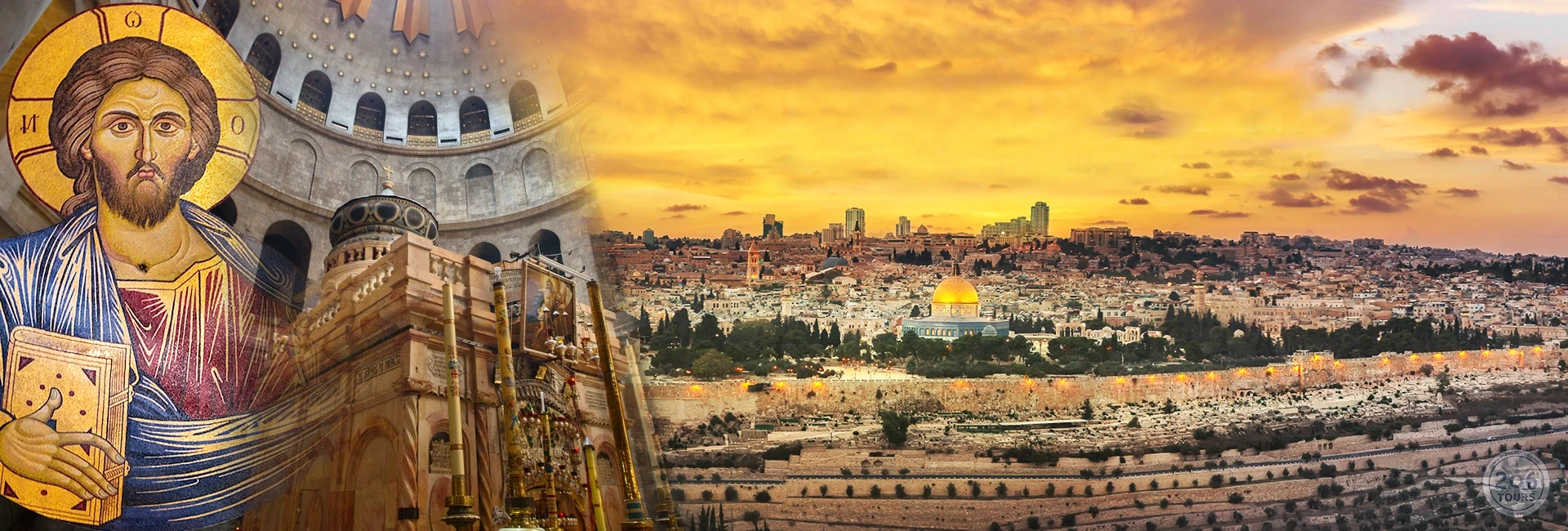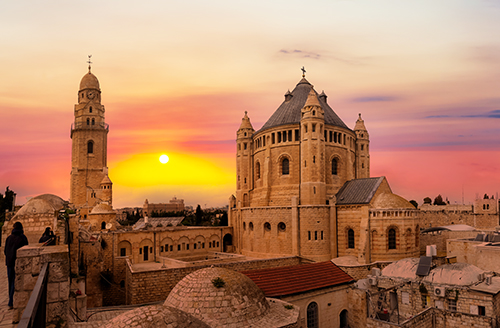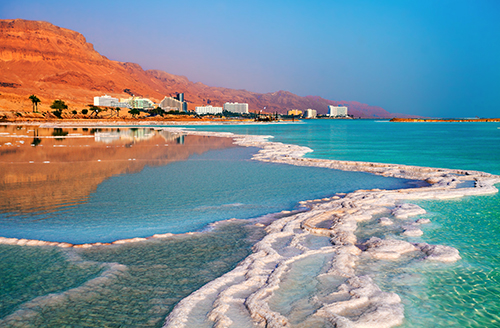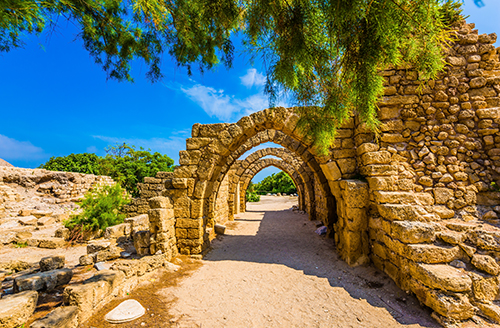
Israel Catholic Pilgrimage
Welcome to an enriching spiritual journey as we explore the significance of Israel Catholic pilgrimage. The Holy Land holds profound importance for Catholic pilgrims seeking a deeper connection with their faith. Embarking on an Israel Catholic pilgrimage provides a unique opportunity to walk in the footsteps of biblical figures, visiting sacred sites and experiencing the rich religious history that has shaped Christianity.
The pilgrimage commences with a visit to Nazareth, the hometown of the Virgin Mary, where pilgrims can reflect on the Annunciation. This sacred city holds a special place in the hearts of Catholics, as it marks the beginning of the extraordinary journey of Jesus Christ. The town’s historic churches, such as the Basilica of the Annunciation, offer a serene space for prayer and contemplation.
Jerusalem, often referred to as the “City of God,” is a focal point for the Israel Catholic pilgrimage. Pilgrims traverse the Via Dolorosa, retracing the steps of Christ on His way to the crucifixion. The Church of the Holy Sepulchre, housing the tomb of Jesus, becomes a destination for solemn reflection and prayer. The Old City, with its religious diversity, serves as a reminder of the interconnectedness of different faiths.
Next on the itinerary is Bethlehem, the birthplace of Jesus, and the Church of the Nativity. Pilgrims can attend Mass in this sacred space, immersing themselves in the divine atmosphere that surrounds the site. The journey through Bethlehem encapsulates the joyous aspects of the Catholic faith, emphasizing the celebration of the Nativity and the profound impact it has had on Christianity.
A significant stop on the pilgrimage is the Sea of Galilee, where Jesus performed miracles and delivered teachings. This serene body of water allows pilgrims to engage in moments of spiritual reflection, contemplating the profound messages conveyed by Christ during His ministry. Sites like the Mount of Beatitudes provide a tranquil setting for prayer and meditation.
The Israel Catholic pilgrimage also extends to the Jordan River, where Jesus was baptized by John the Baptist. Pilgrims partake in the spiritual practice of renewal through the sacrament of baptism, reinforcing their commitment to the Catholic faith. The waters of the Jordan hold deep symbolism, signifying purification and rebirth in the Christian journey.
Exploring the deserts of Israel, pilgrims encounter the solitude and austerity that defined the lives of biblical figures like John the Baptist. The stark beauty of the desert landscape serves as a backdrop for reflection on the ascetic aspects of the Christian faith, fostering a sense of humility and simplicity.
The city of Jericho, known for its biblical significance, is another noteworthy stop. Pilgrims reflect on the story of Joshua and the walls of Jericho, drawing parallels to the challenges and obstacles faced in their own spiritual journey. This ancient city becomes a metaphor for breaking down barriers and overcoming adversity through faith.
As the Israel Catholic pilgrimage progresses, the sacred city of Hebron comes into focus. Pilgrims explore the Cave of the Patriarchs, where Abraham, Isaac, and Jacob are believed to be buried. This site symbolizes the continuity of the Abrahamic faiths, fostering a sense of unity among Catholics and their counterparts in Judaism and Islam.
The journey also includes a visit to Mount Nebo, where Moses gazed upon the Promised Land. This vantage point provides pilgrims with a panoramic view of the landscapes that played a pivotal role in biblical narratives. The experience prompts contemplation on the themes of promise, faith, and the enduring connection between God and His people.
The Dead Sea, with its mineral-rich waters and unique buoyancy, offers pilgrims a rejuvenating experience. Amidst this natural wonder, participants in the Israel Catholic pilgrimage can reflect on the concept of spiritual buoyancy, finding strength and resilience in their faith even in the most challenging circumstances.
Continuing the pilgrimage, pilgrims arrive at the ancient city of Capernaum, where Jesus performed many miracles. The ruins of the synagogue and the house of Saint Peter provide a tangible link to the historical context of Jesus’ ministry. Pilgrims engage in prayer and reflection in these sacred surroundings, connecting with the miracles that unfolded in this significant location.
The spiritual journey reaches its climax at the Mount of Olives, a site intimately associated with Jesus’ Ascension. Pilgrims stand in awe as they contemplate the profound moment when Christ ascended to the heavens, leaving a lasting imprint on the hearts of believers. The panorama of Jerusalem from the Mount of Olives serves as a powerful visual metaphor for the expansive reach of the Catholic faith.
Throughout the Israel Catholic pilgrimage, pilgrims are invited to participate in Mass and other sacraments, fostering a sense of communal worship and spiritual unity. These shared moments of prayer and reflection deepen the bonds among participants, creating a lasting sense of community that transcends geographical and cultural boundaries.
In conclusion, the Israel Catholic pilgrimage is a transformative journey that encapsulates the essence of Catholicism. From the sacred sites of Nazareth and Bethlehem to the serene landscapes of the Jordan River and the Dead Sea, every step of the pilgrimage reinforces the spiritual connection between the Catholic faith and the biblical narratives that unfolded in the Holy Land. Embark on this sacred journey to nourish your soul, deepen your faith, and experience the profound beauty of Israel’s Catholic pilgrimage.
Tours visiting Israel:
The Holy Land - Walk Where Jesus Walked
Tel Aviv * Caesarea * Nazareth * Cana * Tiberias * Sea of Galilee * Jordan River * Mt. Tabor * Jerusalem * Ein Karem * Bethlehem * Qumran * Jericho * Dead Sea * Mt. of Olives * Mt. Zion * Holy Sepulchre
| Duration | Destination |
|---|---|
| 10 Days | Israel |
If you desire to draw closer to Jesus of Nazareth, come, as we follow in His footsteps. You will have time to renew and affirm your faith each day of your pilgrimage; to pray and reflect. The Scriptures will come alive as you visit Our Lord’s homeland. You will be inspired by the natural beauty of the landscape, in addition to its rich historical heritage. It is an encounter that has changed the lives of many pilgrims, an act of faith and prayer. Pilgrims have been traveling to the Holy Land for hundreds of years, and as part of your pilgrimage, we include many of the rich traditions that have evolved over time. The maxim at the entrance to the Church of the Nativity says: “We are hoping that: If you enter here as a tourist, you would exit as a pilgrim. If you enter here as a pilgrim, you would exit as a holier one.” We pray that same will occur when you join this 206 Tours pilgrimage.
The Holy Land in Luxury Accommodation
| Duration | Destination |
|---|---|
| 10 Days | Israel |
Enjoy the best cultural elements the Holy Land has to offer. Learn about the spices and herbs that have been used for thousands of years in a Nazareth market. Sample simple delicacies like fresh pomegranate juice, handmade bread from a bakery inside the Old City, humus made by generations of the same family, and more. Eat in some of the best restaurants in the country, experiencing the height of modern Israeli cuisine at Satya, and try ancient recipes from Galilee at Magdalena.
The Holy Land & Medjugorje
Tel Aviv * Caesarea * Nazareth * Cana * Tiberias * Sea of Galilee * Jordan River * Mt. Tabor * Jerusalem * Ein Karem * Bethlehem * Qumran * Jericho * Dead Sea * Mt. of Olives * Mt. Zion * Holy Sepulchre * Medjugorje
| Duration | Destination |
|---|---|
| 14 Days | Israel & Bosnia-Herzegovina |
Make your way through the Holy Land to experience Him, follow in His footsteps, and see Him in the works He performed – your footsteps will become His. Celebrate votive Masses in the very places where these miraculous gifts became pages in the Gospel. See where He was back then, and feel how He is still there today! After, visit Medjugorje, located in Bosnia & Herzegovina, is the site of the 1981 Marian Apparitions. On June 24th, 1981 six children witnessed the Blessed Virgin Mary on what is now known as Apparition Hill. The apparition of Our Lady had a message of peace for the world, as well as a call to conversion, prayer, and fasting. She appeared to them with an infant in their arms and confided several secrets to the children. Some of the children, now adults, continue to witness Our Lady’s apparitions.
The Holy Land & Rome
Tel Aviv * Caesarea * Nazareth * Cana * Tiberias * Sea of Galilee * Jordan River * Mt. Tabor * Jerusalem * Gethsemane * Ein Karem * Bethlehem * Qumran * Jericho * Dead Sea * Mt. of Olives * Gethsemane * Mt. Zion * Holy Sepulchre * Rome
| Duration | Destination |
|---|---|
| 13 Days | Israel & Italy |
Make your way through the Holy Land to experience Him, follow in His footsteps, and see Him in the works He performed – your footsteps will become His. Celebrate votive Masses in the very places where these miraculous gifts became pages in the Gospel. See where He was back then, and feel how He is still there today! Explore “The Eternal City” and all the marvels Rome has to offer and even experience a Papal Audience with the Holy Father. Visit important Catholic sites like the Holy Stairs, the minor Basilicas, and some historical sites like the Trevi Fountain. Tour the Catacombs in Rome, which are the world’s largest underground Christian burial site. Immerse yourself in the rich culture, art & cuisine of Italy on this Catholic Pilgrimage!




